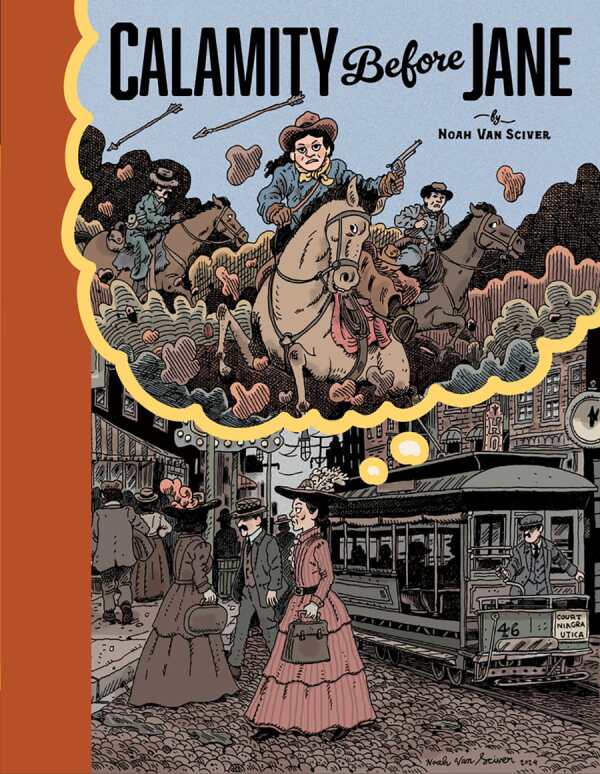Calamity Before Jane
The truth behind the legend of Calamity Jane is revealed in Noah Van Sciver’s graphic biography Calamity Before Jane.
At the Pan-American Exposition of 1901 in Buffalo, New York, crowds pay to meet Martha Jane Cannary, better known as Calamity Jane. She shares thrilling tales about her experiences as a Pony Express rider in South Dakota and her capture of the killer of her friend Wild Bill Hickok. After meeting two homeless waifs at the show, she tells them a less exaggerated version of her story. A scout for George Custer, she saved an army captain during a Sioux attack; longing for the “Wild West,” she left the traveling show of Buffalo Bill Cody and headed home.
The book prioritizes entertainment over comprehensiveness, fitting with its main point: many of Jane’s tales were fabricated or exaggerated. Still, Jane is celebrated as a storyteller, a role in which she excels. Key moments puncture the myths Jane created about herself and the West: in one scene, the Native American Chief Black Heart advises Jane that the West is not as it once was because of US government actions like the extermination of buffalo. A text postscript by a Native American historian is accompanied by photographs and provides more context for the story, with factual accounts of both Jane and the experiences of Native American populations. The art captures the fanciful aspects of the Wild West but also includes subtle hints of ugly truth, such as the loneliness Jane seems to feel and the alcohol that she carries with her.
The graphic biography Calamity Before Jane gives a sense of the mystique of the historical figure while also pointing out the falsehoods that made her a legend.
Reviewed by
Peter Dabbene
Disclosure: This article is not an endorsement, but a review. The publisher of this book provided free copies of the book to have their book reviewed by a professional reviewer. No fee was paid by the publisher for this review. Foreword Reviews only recommends books that we love. Foreword Magazine, Inc. is disclosing this in accordance with the Federal Trade Commission’s 16 CFR, Part 255.

